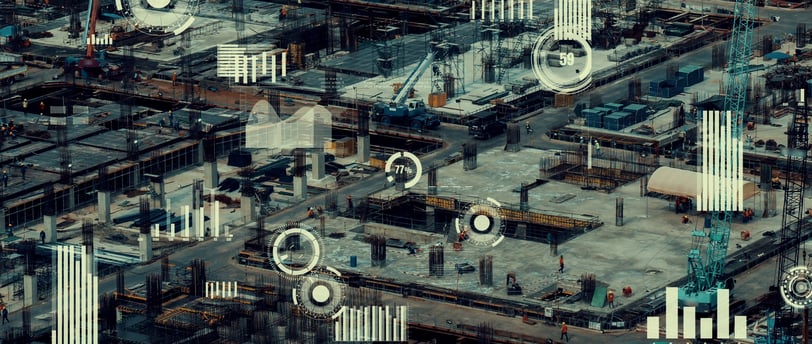How Data Is Shaping the Future of Urban Planning and Design
TECHNOLOGY


Urban planning has entered a new era, driven by the power of data. With advancements in technology, planners and designers are leveraging vast amounts of information to create smarter, more efficient, and inclusive cities. From analyzing traffic patterns to monitoring air quality, data is transforming how urban spaces are planned, designed, and managed.
This article explores the growing role of data in urban planning, its potential benefits, and the challenges of integrating it effectively into city design.
The Role of Data in Urban Planning
1. Understanding Urban Dynamics
Data provides insights into how cities function, offering planners a detailed view of their complexities.
Population Density: Identifying where people live, work, and travel.
Traffic Flow: Analyzing movement patterns to optimize transportation systems.
Resource Use: Monitoring water, energy, and waste for sustainable management.
2. Predicting Future Needs
By analyzing trends, planners can anticipate urban growth and adapt infrastructure accordingly.
Housing Demand: Forecasting population growth to ensure sufficient housing.
Climate Adaptation: Preparing for extreme weather events with resilient designs.
Economic Development: Identifying areas ripe for investment and job creation.
3. Engaging Communities
Data-driven tools like interactive maps and dashboards allow citizens to participate in urban planning decisions.
Public Input: Crowdsourced data from residents enhances planning accuracy.
Transparency: Open data platforms foster trust and accountability.
Applications of Data in Urban Design
1. Smart Transportation Systems
Real-Time Traffic Monitoring: Sensors and GPS data optimize traffic flow and reduce congestion.
Public Transit Improvements: Ridership data helps improve bus and train schedules.
Autonomous Vehicles: Data-driven simulations design roads for driverless cars.
2. Environmental Sustainability
Energy Efficiency: Smart grids manage electricity demand and reduce waste.
Air Quality Monitoring: Sensors track pollution levels, guiding policies for cleaner air.
Green Space Planning: Satellite imagery identifies opportunities for urban greening.
3. Crisis Management
Disaster Response: Data from IoT devices predicts and mitigates natural disasters like floods or earthquakes.
Pandemic Preparedness: Mobility data helps model disease spread and allocate healthcare resources.
4. Urban Equity and Accessibility
Affordable Housing Maps: Data pinpoints areas lacking low-cost housing.
Accessibility Audits: Tools like GIS assess whether urban spaces are inclusive for all residents.
Data Tools Revolutionizing Urban Planning
1. Geographic Information Systems (GIS)
GIS software visualizes spatial data, aiding in mapping and analyzing urban layouts.
Example: Mapping areas prone to flooding to guide construction policies.
2. Internet of Things (IoT)
IoT devices collect real-time data on infrastructure, traffic, and environmental conditions.
Example: Smart streetlights adjust brightness based on pedestrian activity.
3. Artificial Intelligence (AI)
AI algorithms analyze data to uncover patterns and predict outcomes.
Example: AI models forecast the impact of new developments on traffic.
4. Big Data Analytics
Massive datasets from social media, sensors, and mobile devices offer insights into urban life.
Example: Analyzing Twitter posts to detect public sentiment about city projects.
5. Digital Twins
Virtual replicas of cities simulate how design changes will impact real-world conditions.
Example: Testing new transportation routes in a virtual environment before implementation.
Benefits of Data-Driven Urban Planning
1. Increased Efficiency
Data reduces trial-and-error by enabling precise decision-making.
Optimized Infrastructure: Building only what’s necessary, saving time and resources.
Streamlined Processes: Automated tools accelerate project timelines.
2. Enhanced Quality of Life
Improved Mobility: Shorter commutes and better public transit.
Healthier Environments: Reduced pollution and more green spaces.
3. Greater Inclusivity
Data-Driven Advocacy: Highlighting underserved areas ensures resources are distributed equitably.
4. Proactive Problem Solving
Data helps identify potential issues before they escalate.
Example: Early detection of water shortages through consumption analytics.
Challenges in Data-Driven Urban Design
1. Privacy Concerns
Issue: Collecting personal data raises ethical questions about surveillance and consent.
Solution: Implementing robust data protection policies and anonymizing sensitive information.
2. Data Silos
Issue: Different agencies often store data in isolated systems, limiting its utility.
Solution: Encourage cross-agency collaboration and centralized data platforms.
3. Accessibility and Equity
Issue: Not all communities have equal access to technology and data-driven tools.
Solution: Provide digital literacy programs and ensure open data availability.
4. Over-Reliance on Technology
Issue: Planners risk sidelining human judgment in favor of algorithmic decisions.
Solution: Balance data insights with local expertise and community input.
Future Trends in Data-Driven Urban Planning
1. Integration of AI and Machine Learning
Planners will increasingly rely on predictive models for decision-making.
Example: AI that forecasts the long-term impacts of urban densification.
2. Expanding the Use of Digital Twins
Entire cities will be replicated virtually, allowing for real-time testing and adjustment.
3. Hyper-Local Data Collection
Neighborhood-specific data will drive hyper-targeted urban interventions.
4. Climate-Focused Data
Advanced models will track carbon emissions and guide cities toward net-zero goals.
Conclusion
Data is shaping the future of urban planning and design by providing actionable insights into how cities function and evolve. While challenges like privacy and equity remain, the benefits of data-driven approaches are undeniable: smarter infrastructure, healthier environments, and more equitable urban spaces.
As technology continues to advance, planners must embrace data not as a replacement for human intuition but as a powerful tool to create cities that are efficient, inclusive, and sustainable. The future of urban living is not just in numbers—it’s in how we use those numbers to enhance the human experience.

